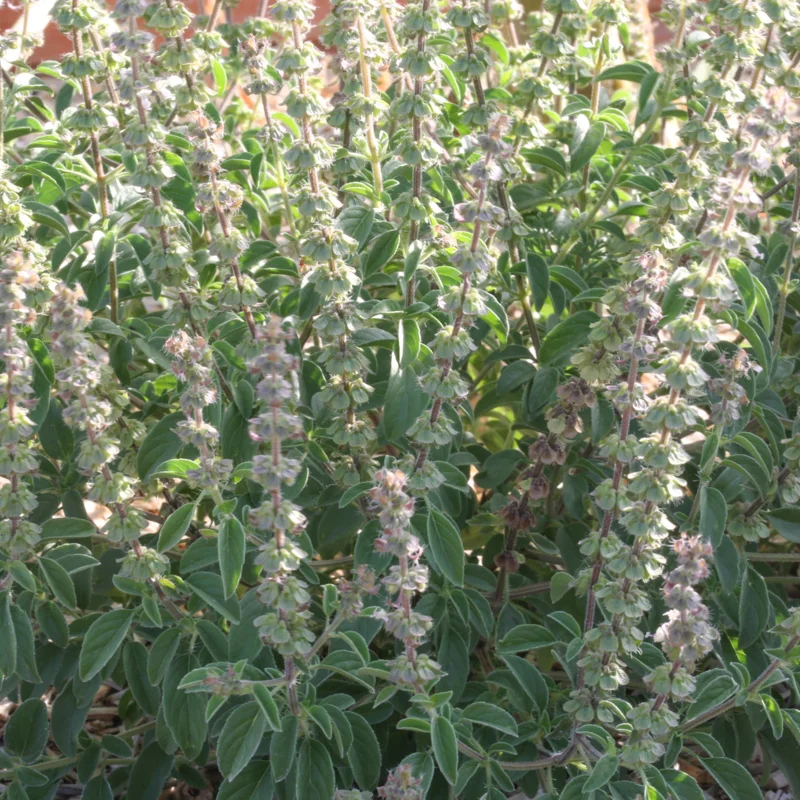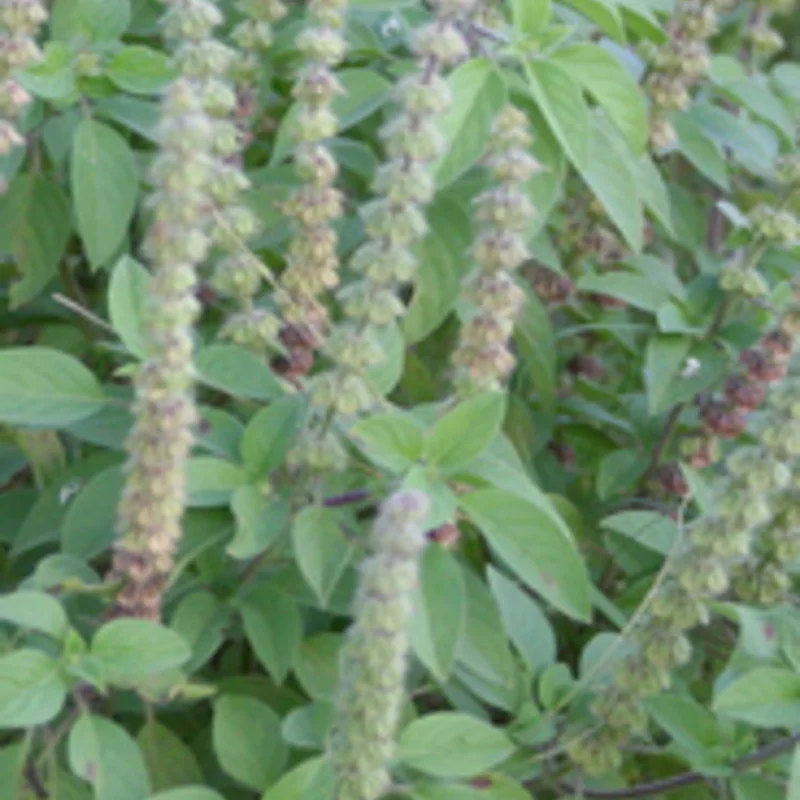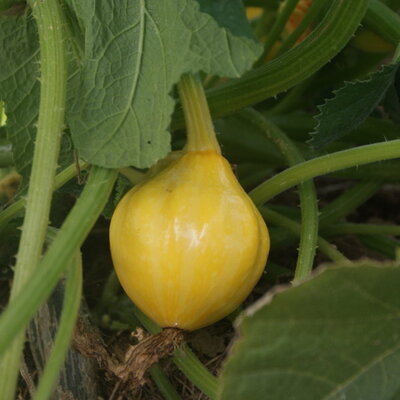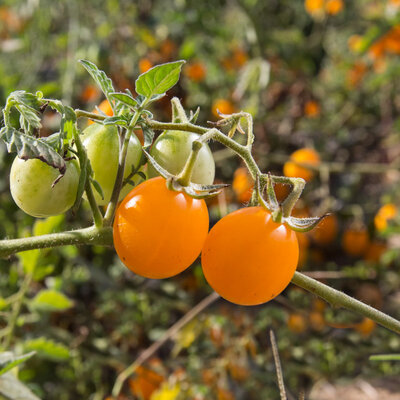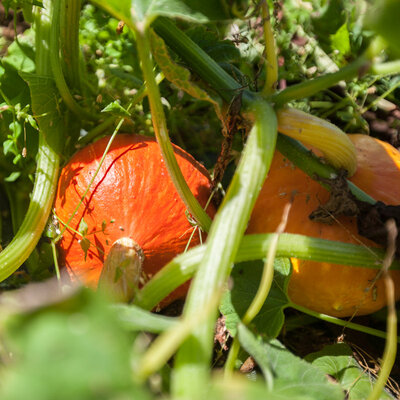African - Basil
This ancient variety produces clusters of mauve flowers and downy green leaves with a minty fragrance.
In agro-ecology, it is renowned for its activity against soil pathogens and insect pests of seeds. Ocimum americanum is resistant to the fungus Fusarium oxysporum ssp. basilicii as well as to basil blight, Peronospora belbahrii.
These products may also be of interest to you
in bucket
Sow in trays at temperatures between 18 and 20°C, under a well-lit shelter, 6 weeks before planting. Transplant into individual cups when plants have 4 to 5 leaves, or plant directly into warmed soil, spaced 25 to 30 cm apart. Take care not to over-water to avoid the risk of wilting.
This variety has low susceptibility to Fusarium fungus and basil blight.
March, April, May, June
June, July, August, September, October
in the ground, in pot, in the greenhouse
full sun
medium
potting soil, sandy, gravel, humus
drained, light, reheated
Ocimum americanum sp. americanum
mid-season
100 seeds
Green
fragrance, edible
From 30 to 50 cm
From 5 to 10 cm
pointed
Africa
"Semences de Kokopelli" by Dominique Guillet
African basil is mainly used to treat diabetes, but also dysentery, colds, parasitic infections, fevers and joint inflammation. Recent studies have highlighted its anti-bacterial, anti-fungal and anti-viral qualities. The essential oil of the leaves is used to treat respiratory problems and as an antipyretic. It is also used in Africa to ward off mosquitoes carrying malaria and dengue fever.



